The Article
Cyrus Lyric: a feature-rich, all-in-one hi-fi system with a unique sense of style
7th September 2016
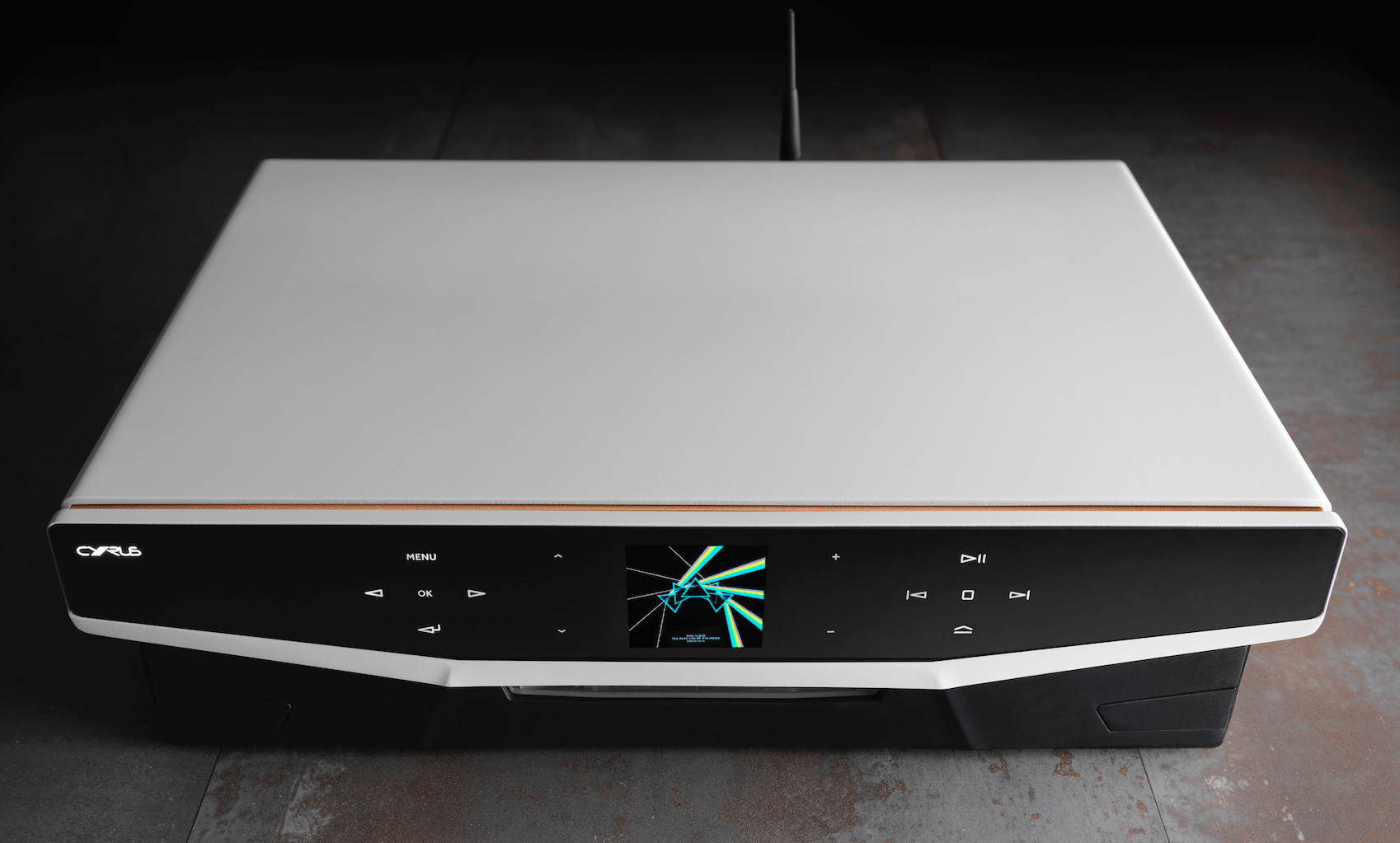
Offering a distinctive design and packed with features, Paul Rigby reviews the Cyrus Lyric
There is something in the mind-set of Cyrus, as a company, that smacks of individualism, you can see it within their product design. This is a mind-set that is to be applauded as it provides much needed choice in an industry that sometimes regresses into clone behaviour. Cyrus is already famed for its half-width components and the Lyric carries on that free-thinking direction because it too raises the eyebrows, in design terms.
The Lyric design reminds me of a piece of ‘retro-futuristic’ styling direct from the late 60s or 70s. I could imagine S.H.A.D.O. commander, Ed Straker, in the Gerry Anderson TV serial UFO, having one of these in his house. That said, if you are not exactly enamoured with this time period then you might be put off by the Lyric even before you can investigate its sonic gifts. Even the power button is quirky as you press the Cyrus logo, on the left side of the front fascia, to wake it up.
On the chassis itself, I reviewed the ‘Stone’ finish that spans 420 x 320 x 105mm and weighs in at 9kg, the Lyric offers touch-sensitive button navigation, laid out either side of a bright and clear central reporting screen. It is interesting that Cyrus has decided not to install a touch screen on the Lyric and then do away with the touch sensitive controls altogether. I, for one, am glad that they didn’t. I’ve had enough of sluggish, unresponsive and overly complicated screen-based interfaces. As it stands, with the current array of touch-sensitive fascia controls, you can select your source and change the volume, mute, access CD transport controls and more.
Faster still in operating the Lyric is the inclusion of a remote control which needs a moment for study but is faster and more efficient than the front fascia interface. It comes complete with backlighting and a motion sensor that turns on and off whenever you move it. The associated Cadence app for iOS and Android is also available and is similarly efficient. They provide control over input switching, choosing tracks stored on a network and the like.
The internal amplifier is a Class D model to save power while the Lyric’s 32bit DAC supports WAV, FLAC, ALAC, AAC, MP3, WMA and AIFF up to 24bit/192kHz. A Wi-Fi aerial allows streaming over a home network although a wired connection into the rear Ethernet socket offers a more stable connection. Bluetooth streaming supports the higher quality aptX audio codec while radio is supported via DAB, FM and TuneIn that provides 100,000 Internet radio channels.
Two USB Type A sockets are included: one at the front with the other on the rear. These sockets allow you to connect external hard drives or other sources such as phones, digital audio players and the like. The rear-mounted USB Type B input allows you to connect a computer to stream music files.
On the far right of the front fascia, the front-mounted USB port and the mini-headphone jack that sits next to it are situated under a flap of the design you sometimes see attached to mobile phones covering its own USB port. You know the type, the covers flick open and hangs off a loose wire or umbilical piece of plastic, to be pushed back after use. I can see the reason that Cyrus did this, to maintain a smooth fascia line but it’s ultimately unsatisfactory because the flap never returns to its location fully flush and, in use, looks cheap and tacky.
SOUND TEST
The usual approach with an all-in-one beast such as this is to head straight for the obvious CD transport but I decided to begin with the DAC. In effect to isolate it from the transport which I will test next. To do that, I hooked up my Leema Elements CD player as the transport via the coaxial on the Lyric and ran Bing Crosby’s track, Mandy, fronting a jazz outfit via Buddy Cole.
This was a revealing test because I could hear distortive noise on the edge of the Crosby lead vocal revealed to the ear as a slight glare, especially ‘visible’ during crescendos but also during the piano sequences. That said, I still remained impressed with the DAC because of the detail retrieval, especially within the midrange which exposed textural emphasis from Crosby’s vocal and the upright bass which had a satisfying weight plus the percussion which sounded spry and agile.
I then brought the Cyrus transport into the picture by inserting the same CD into the Cyrus transport and used the unit as an external CD player in my reference hi-fi system. In this configuration, the noise and its visible sonic ‘glare’ was slightly less obvious. This allowed more emotion and nuance to be released by the Crosby vocal while the piano improved its tonal accuracy slightly.
Keeping the Cyrus attached to my reference hi-fi system, I connected my Astell & Kern AK120 via the Cyrus’ optical port and played the 24bit/88.2kHz version of Dire Straits’ Money for Nothing. This is a fairly bright master that can punish and unsuspecting DAC with a harsh suite of upper frequencies. Not here though. It seems that, leaving the CD player behind, the DAC found a new lease of life when connected to a solid state source. Yes, you can sense that this master is quite hot and has a bright nature but the high definition files (as opposed to the disc-based 44.1kHz CD file) sounded rich, open punchy and very musical. Drums were crisp and precise while the oft masked cow-bell was present and correct, vocals were detailed and informative while the guitar, which could be ear-splitting during its own crescendos, offered a revealing and nicely complex response.
I then inserted my iPhone 6S into the rear USB port and played Kylie Minogue’s All the Lovers from her Abbey Road Sessions and was pleasantly surprised by the quality of this ‘mere’ MP3. The introductory guitar strumming was relatively rich and euphonic while the Minogue vocal was clean without any obvious glare or brightness. I could have gone on but was abruptly interrupted by the Cyrus itself. It stopped. That is, the entire unit shut down and went to sleep. An error message appeared on the front screen informing me that there was excessive amount of current. I then had to disconnect the power lead from the Lyric, wait a few moments, reconnect and start the entire unit again. This bug flared up on four separate occasions and over two separate USB cables and happened whether I inserted the iPhone’s USB cable in the front or the rear sockets. The reason? Well, I’m still waiting for an answer. Other devices in the same USB port, including a FiiO F1 digital audio player, worked without any issue. Only the iPhone gave me this very strange error.
I moved on with my tests and inserted my Sennheiser HD800S headphones into the front loading headphone amp socket and played Bob Marley’s I Shot the Sherriff at 24bit/96kHz via my Astell & Kern 120. I was pleasantly surprised at the headphone output. For a freebie, the Cyrus head amp was a top performer. Yes, the bass could have been more characterful but it did provide a sense of clarity over the midrange that enhanced the Marley delivery, giving his words greater articulation and the backing instruments plenty of space and room to manoeuvre.
Finally getting around to the point of the Cyrus, I looked to utilise the Lyric as a stand-alone, all-in-one hi-fi system and hooked up my Quad speakers to the Lyric’s built-in amplifier and repeated the CD play, using the Crosby track. The general sound output as very pleasant indeed, although the glare issues over the upper midrange remained from the earlier tests. I was sufficiently intrigued, though to return to my Astell & Kern and see how the a hi-res Marley song would cope.
And boy, did it! Running this hi-res file via the Cyrus was a joyful listen. Totally musical in its approach, the track triggered a host of superlatives in my head. That bass guitar was tight, easily discernible, bouncy, full of character and tonally right on the nose. Marley’s voice was full of passion and vehemence. His own sense of movement within the track was almost overwhelming as was the beautifully crafted background harmonies. The accompanying organ excerpts provided the track with a rich underlay while the percussion was lively, animated and vibrant.
I then returned to the Kylie song via my iPhone 6S, playing the MP3 as a stand-alone unit. This time there were no issues and no breakdowns and the file played perfectly. Hence, the breakdown bug only appeared with the Lyric hooked up to an external hi-fi system. An unlikely configuration for an all-in-one system, of course.
Actually, I was very surprised by how the Cyrus played MP3. The MP3 format, in broad terns, is an abomination and should be fed to the nearest shoal of Pirañas but, well, it didn’t sound half bad via the Cyrus. In fact, it’s been a while since I’ve heard an MP3 sound so good, especially via hardware at this price point. There was air in the soundstage, a keen sense of timing from the instrumentalists, a lavish aspect to the backing orchestra while Minogue sounded pretty lush herself. The MP3 results only go to enforce how well the Cyrus tackled digital files from a solid state source.
I was similarly impressed after I pushed this track from my iPhone to the Cyrus via Bluetooth. Yes there was that thin and weedy structure that is so often familiar in streamed tracks but, that aside, the Cyrus did a good job in giving this song a sense of body and shape.
CONCLUSION
Apart from the slightly odd (and rather rare, in terms of how you would recreate such an error) iPhone hardware ‘fail’ when the Cyrus was used as an external source within my reference hi-fi, I was pretty impressed with the unit overall. It’s not great news all round, that’s true, playing music from a CD (internally or externally) is the weak link here. The excess of noise from this area lets the Cyrus down a tad. No, the main and, to me, only reason to buy the Lyric will be down to its handling of digital files, in all its resolutions and genre flavours. No matter what type of digital file you want to through at the Lyric, it will reward you with a host of sparkling sonics. The fact that if can do this with the quick addition of a pair of speaker means that the Lyric can easily sit as your principle digital player, taking little space in your listening room.
If digital files from a solid state source is your main musical supply, then the Lyric will prove very rewarding indeed. Hence, I see they Lyric, not so much as an all-in-one hi-fi system but as a brilliant ‘digital hub’. If Cyrus dumped the CD player and then lowered the price by £400-500 or so, then I would be quick in giving the Lyric an award-winning rating.
CYRUS LYRIC ALL-IN-ONE HI-FI SYSTEM
Price: £2,500
Tel: 01480 410 900
Web: www.cyrusaudio.com
GOOD: digital file performance from solid state sources, interface, flexibility, feature count, relatively small footprint, value for money
BAD: CD performance, styling issues, questionable smartphone operation


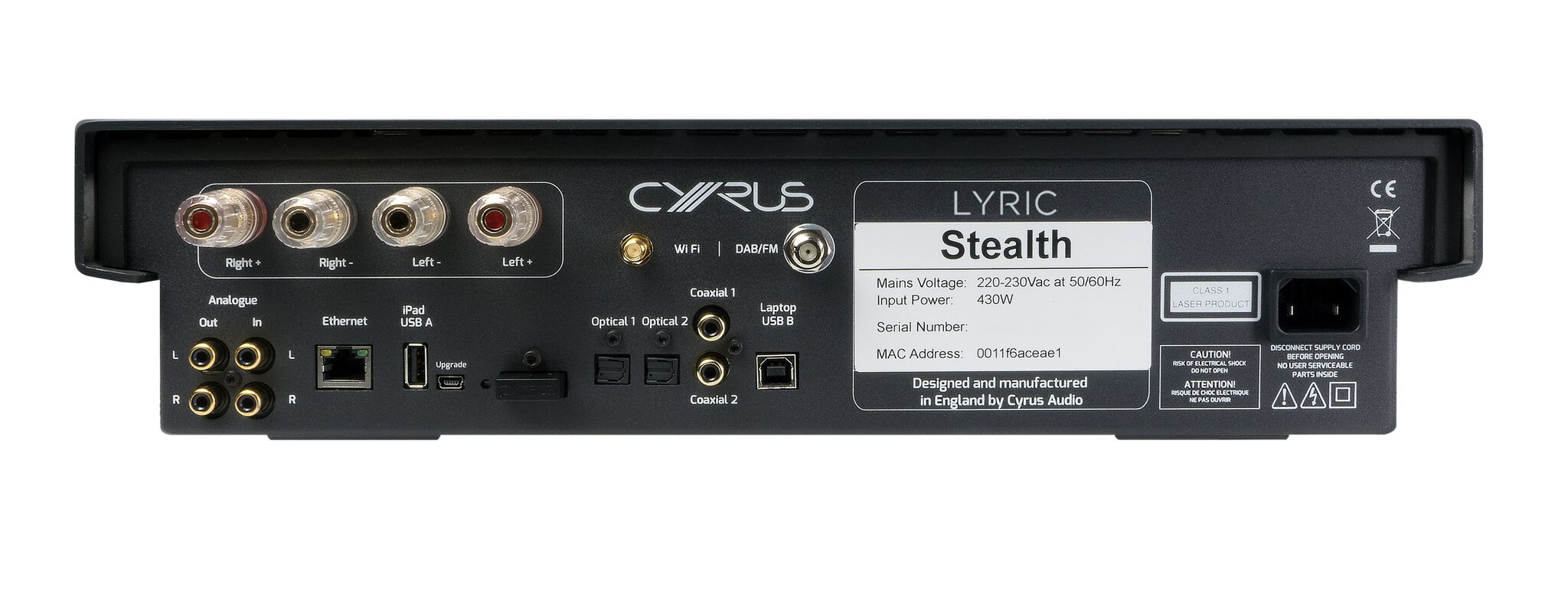
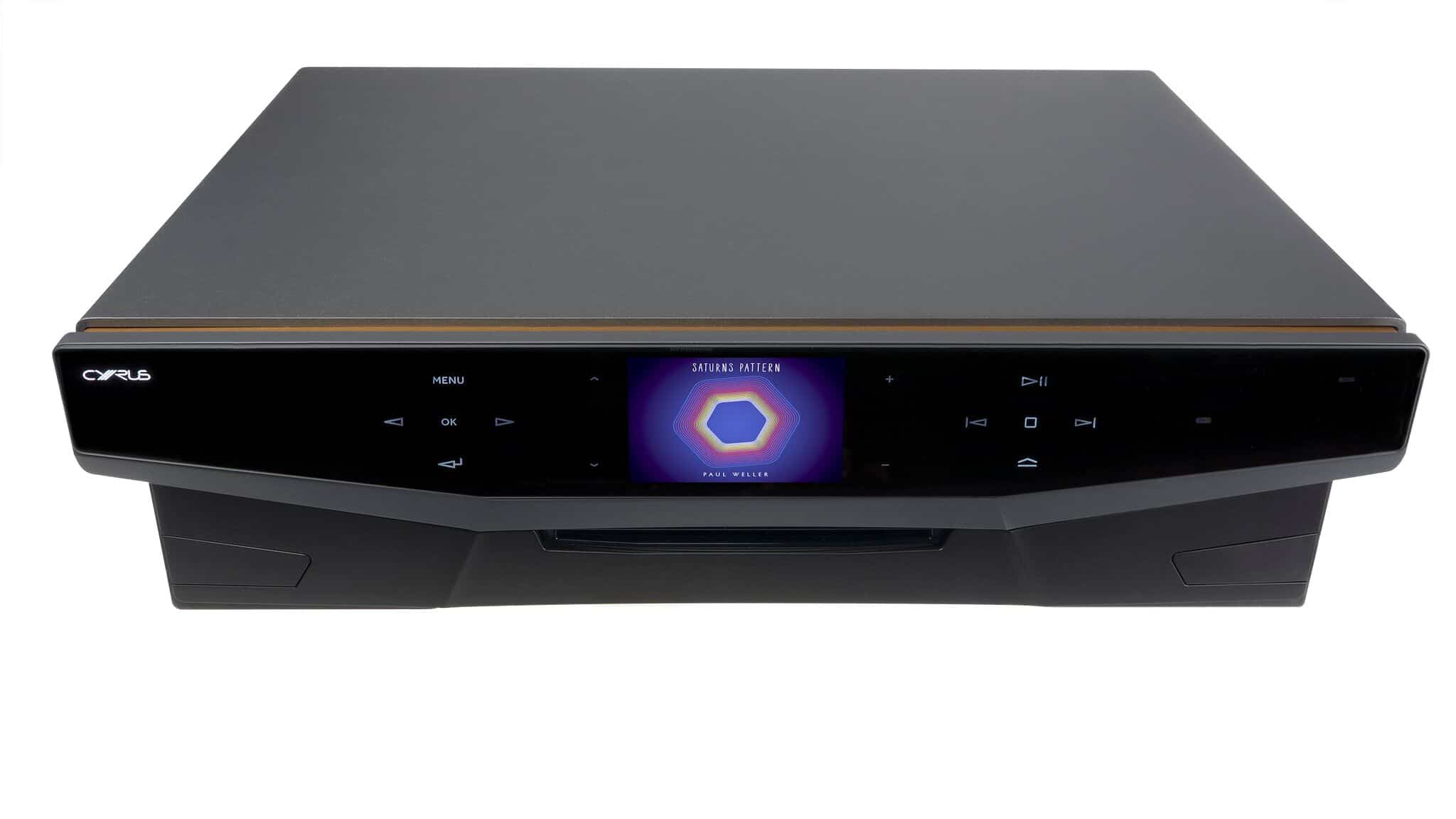
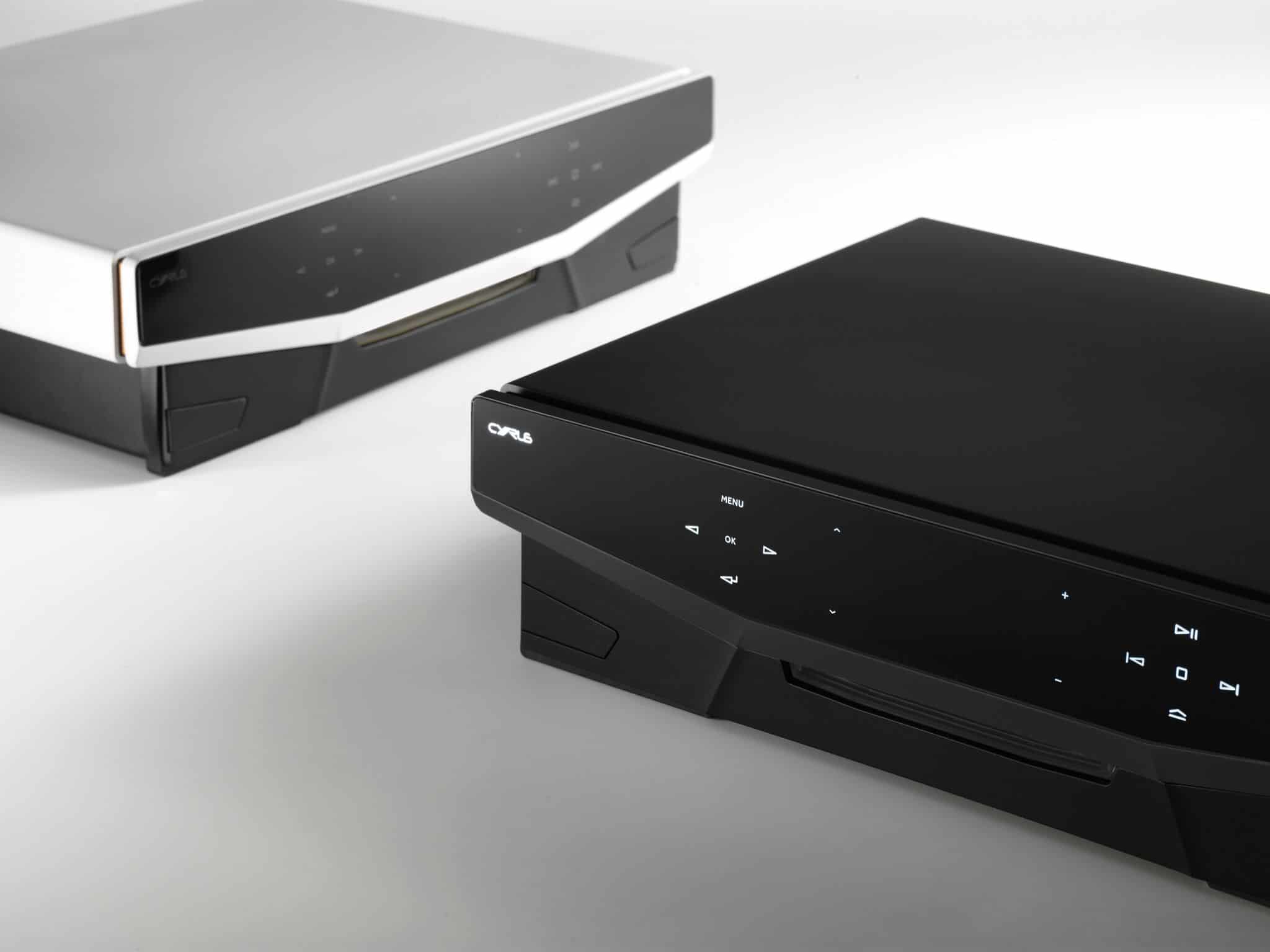


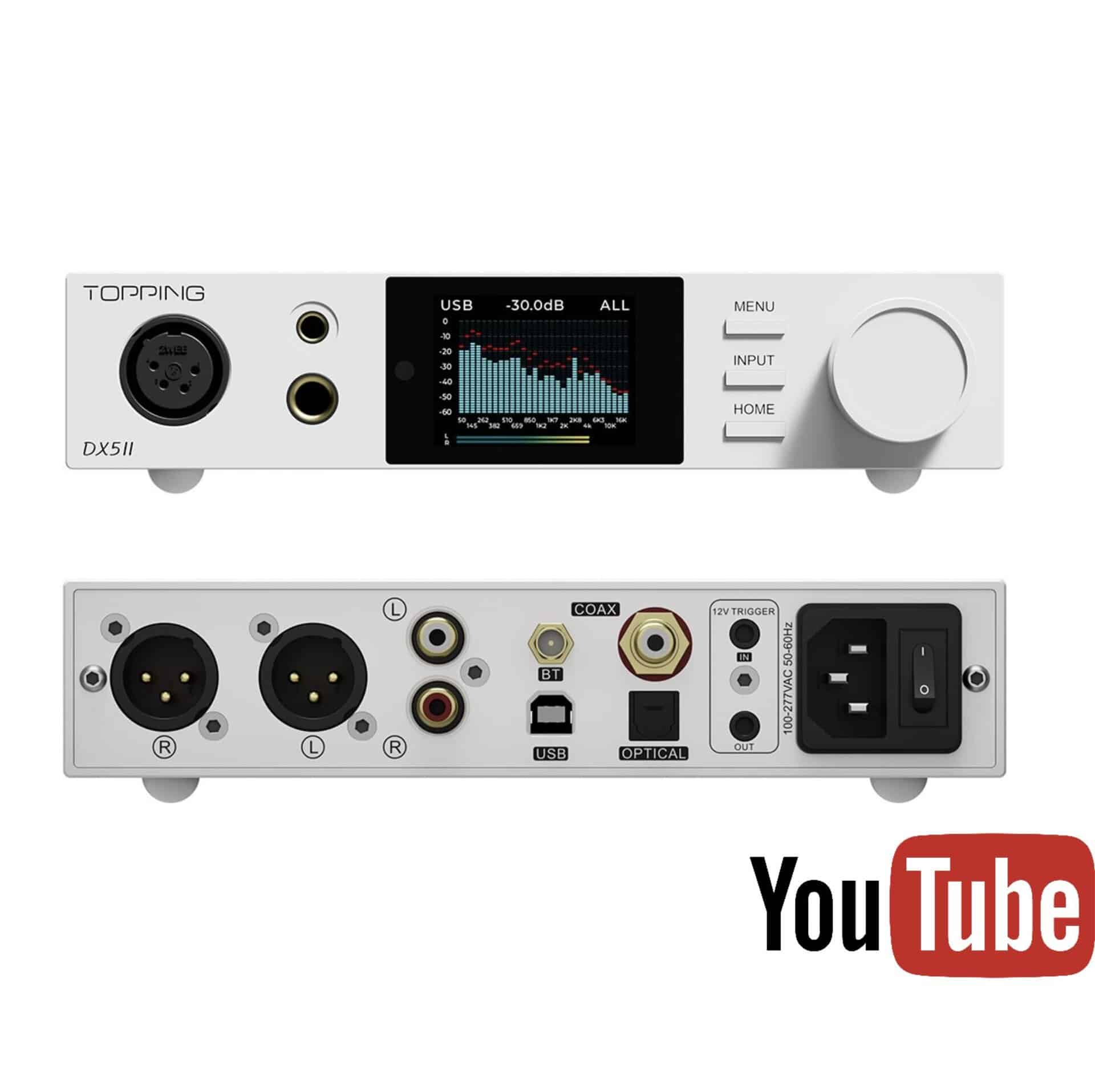
Hi Paul,
I read your review with some interest having recently purchased the earlier (and some would say uglier!) Cyrus Lyric 09.
I would agree with some of the more superficial issues you have with this system. Elements of the interface are annoying, despite the range of control options – app, remote or touch – there are issues with each. I can also see how the look of the system could put people off – though I like it.
I think there are serious problems with your review though. Using the USB ports in the way you did to get that iphone error. Nobody is going to use the system like that! You admit that in the review but are critical of it anyway. I think that is rather unfair. More seriously the Cyrus is designed to impedance match the amplifier to the speakers used – more details can be found in this PDF:
http://www.cyrusaudio.com/support/pdf-brochures-manuals/miscellaneous/50-cyrus-stereo-200-white-paper/file
By fiddling around with your reference system etc you are likely to have messed this up, very possibly accounting for the harsh elements to the sound. You have not used the system as it was designed to be used. How can a judgement therefore be trusted?
Yes, it looks weird. Yes, there are elements of the control interface that are mildly irritating. But I think this unit offers outstanding sonic quality for the money. It is also incredibly versatile. Any irritations simply fade away as the music takes hold.
I purchased the Lyric 09 new for ¬£1599 – I think that’s a total bargain. I won’t say where from but it was a respected UK dealer and a bit of googling will reveal the source. For those of us on a limited hifi budget I think this is an awesome piece of kit. Obviously everyone has their opinions but I think the impedance matching issue – something the unit does when first connected to a set of speakers, is an important point to raise.
Dear Matthew,
Thank you for sharing your experience.
I have just bought this system and considering matching floor standing speakers fro an area of 40 sqm.
I am considering Tannoy XT8F but any suggestions will be appreciated.
Many thanks.
J
Thanks for your note, Matthew. I appreciate the time you’ve taken to detail your points.
It’s possible that you may have misunderstood some of my points within the review, though. Firstly, I had no issues with the interface at all. Quite the opposite, in fact! I actually applauded the interface choices made and I approved of the choices of controlling it.
Also, I had no issues with the design. Again, quite the opposite 🙂 I did point out that the design would attract strong opinions but that’s no bad thing.
Onto your criticism of my discovery of the USB bug. I talked to Cyrus about this and it is scratching its head about the issue. I hope to have some sort of explanation soon.
As to why I reviewed the Lyric as I did? I thought it only fair that I look at each individual component within the Lyric so see how it measured up. The only way to do this was to, as it where, isolate each and review it separately. Taking this approach revealed the weakness of the CD system, for example.
I do take issue that I have “not used the system as it was designed to be used.”. If you look towards the end of the sound test, you will see that my tests do exactly that, plugging in speakers to utilise the Lyric as an all-in-one.
I also think that the Lyric is an excellent system but as a digital hub.
Thanks again for your comments.
Can you confirm if any tests were carried out connecting a turntable and what pre-stage was used?
I have a large vinyl collection and currently the sound quality is extremely poor to my amazement when comparing CD and radio!
Hi John
No, I didn’t utilise a turntable during the test I’m afraid but I wouldn’t be surprised if the Cyrus retained a similar, non-CD, personality.
Dear Paul,
Thank you for this article. I have recently bought this system as it was on sale at Richer sounds/ Any thoughts?idea about matching speakers. I am considering Tannoy XT8F for a listening area of 40 sqm. Many thanks. J
Hi Jas – what’s the dimensions of your room please?